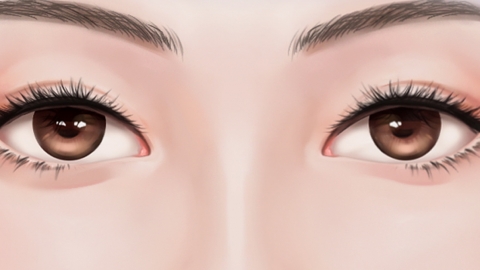How to address wrinkles on the lower eyelid
Generally, wrinkles under the lower eyelid may be caused by aging, genetic factors, blepharitis, skin laxity syndrome, facial nerve palsy, and other reasons. The solution should be selected based on the specific cause to achieve therapeutic effects. It is important to seek medical attention promptly and follow medical advice for treatment. Details are as follows:

1. Aging: With aging, the skin gradually loses elasticity and moisture, and the synthesis of collagen and elastic fibers decreases, leading to skin laxity and the formation of wrinkles. The skin of the lower eyelid is thinner and more susceptible to the effects of aging. Wrinkles can be treated using medical aesthetic methods such as laser therapy and radiofrequency therapy.
2. Genetic factors: Genetic factors determine individual skin characteristics, including skin thickness, elasticity, and collagen distribution. If immediate family members have wrinkles under the lower eyelid, the children are more likely to develop this condition. Wrinkles caused by genetic factors are difficult to completely eliminate with medication or surgery but can be improved through daily skincare and medical aesthetic methods.
3. Blepharitis: Blepharitis is mainly caused by infections such as Staphylococcus aureus or allergic reactions, leading to inflammatory responses in the eyelid skin, with symptoms such as redness, itching, and pain. Long-term inflammatory stimulation may cause skin laxity and wrinkle formation. Under a doctor's guidance, medications such as dexamethasone sodium phosphate eye drops, hydrocortisone acetate eye drops, and levofloxacin hydrochloride eye drops can be used as prescribed to treat inflammation.
4. Skin Laxity Syndrome: Skin laxity syndrome is a pathological condition characterized by reduced skin elasticity, resulting in loose and sagging skin. The skin of the lower eyelid is thinner and more prone to laxity, leading to wrinkles and may also be accompanied by nasolabial folds. Under a doctor's guidance, surgical treatments such as eyebrow excision, double eyelid surgery, and facelift can be selected to restore skin tightness.
5. Facial Nerve Palsy: Facial nerve palsy is a neurological deficit caused by damage to the facial nerve, leading to facial muscle paralysis. Facial nerve palsy may lead to abnormal eye muscle function, causing symptoms such as muscle relaxation or spasms, thereby affecting skin tightness and elasticity, leading to wrinkles, and may also be accompanied by ptosis. As prescribed by a physician, medications such as mecobalamin tablets, vitamin B1 tablets, and acyclovir tablets can be used to nourish nerves and provide antiviral treatment.
Prior to undergoing any treatment, it is necessary to consult with a doctor to ensure safety and effectiveness.








